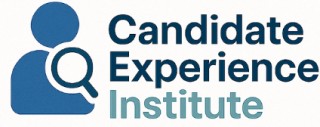
Understanding Team Dynamics
Decoding the Intricacies of Team Dynamics
Understanding team dynamics is crucial when integrating into a new team, especially during organizational changes like mergers and acquisitions. The process of merging teams can be complex, but a smooth transition is achievable with the right approach. Team dynamics refer to the invisible forces that influence the behavior and performance of team members. These forces can include communication styles, leadership approaches, and the overall team culture.
When teams merge, it’s essential to recognize that each team member brings unique experiences and perspectives. These differences can lead to a high-performing team if managed well. However, without proper attention, they can also cause friction. Therefore, understanding the dynamics at play is the first step in ensuring a successful merger.
One effective way to navigate these dynamics is by observing how team members interact during meetings and informal gatherings. Pay attention to who takes the lead, how decisions are made, and how conflicts are resolved. This observation will help you identify key influencers within the team and understand the existing communication patterns.
Additionally, familiarizing yourself with the organizational structure and the roles of different team members can provide valuable insights. This knowledge will help you fill any gaps in understanding and support your efforts in building rapport with colleagues, which is crucial for a successful integration.
For more insights on creating a welcoming environment for new team members, consider exploring crafting the perfect welcome email for new hires. This resource can provide guidance on how to make new employees feel valued and supported from the start.
Building Rapport with Colleagues
Establishing Genuine Connections
Building rapport with colleagues is crucial when joining a new team, especially during transitions such as mergers and acquisitions. Employees find comfort in a supportive network, which eases the merging process into new organizational structures. A warm atmosphere can lead to effective collaboration and streamline communication, pivotal in a team merger.
Start by showing genuine interest in your team members. Begin with simple conversations and participate in team activities to fill any gaps in understanding. This approach sets the stage for a smooth transition even during significant changes like organizational restructuring or merging teams into a new department.
High performing teams thrive on mutual respect and understanding, fostered through open and transparent communication. During a merger acquisition or team merger, effective communication can alleviate potential misunderstandings and facilitate a successful merger. Regularly scheduled team meetings or informal gatherings, similar to those on platforms like Microsoft Teams, can offer opportunities to nurture these connections.
Training programs designed to promote integration and communication can also fill the resources needed to build strong connections. These tailored initiatives teach team members to adapt to workflows, ultimately leading to a more cohesive and high performing organization.
The ability to adapt and connect with team members not only enhances teamwork but also supports individual growth within the team. For further insight into how remote work is influencing training practices, consult this comprehensive examination on the topic.
Effective Communication Techniques
Mastering Communication Skills in a New Environment
Communication is a crucial aspect that can make or break the process of smoothly integrating into a new team, especially during organizational changes such as mergers and acquisitions. Successfully navigating these changes requires a focus on communication strategies that will help build a high performing team.- Listen Actively: One of the primary steps to effective communication is listening. During merger or acquisition transitions, pay close attention to your colleagues’ perspectives. Understanding their thoughts and concerns forms the bedrock of meaningful communication and helps foster mutual respect among team members.
- Choose the Right Medium: Different teams, depending on structure, may adopt varied modes of communication. Some might lean on traditional emails, while others use platforms like Microsoft Teams for a more fluid interaction. Understanding your team's preferred communication channel will support smoother interactions.
- Be Clear and Concise: Whether you are sharing an update in a team meeting or providing feedback, clarity is key. Avoid jargon, especially in teams consisting of employees from different organizational backgrounds post-merger. Clear communication ensures your message is received without confusion.
- Encourage Open Dialogue: Create an environment where team members feel comfortable sharing their ideas or raising concerns. This leads to a more supportive team atmosphere, crucial during a merger process, and aids in building rapport with colleagues.
- Adapt to Cultural Nuances: Knowledge of the existing communication culture in team mergers is essential. Adapting your style accordingly can lead to a smoother transition and successful integration into new workflows. Learning these nuances early in the process can help you fill any communication gaps that may exist.
Utilizing Technological Tools
To enhance communication, leveraging technology can be a game changer. Tools and training programs tailored for easing communication can aid in eliminating misunderstandings. For further insights into using technology for improving communication, explore this enhancement guide. The right communication strategies not only help in aligning individual goals with team objectives but also lead teams into achieving a harmonious balance between individuality and team cohesion. Communication mastery, particularly during mergers, ensures that everyone is on the same page, paving the way for a smooth and successful transition.Adapting to New Workflows
Streamlining Processes for Seamless Integration
Adapting to new workflows is crucial when joining a new team, especially in scenarios involving mergers and acquisitions. Such organizational changes can lead to the merging of teams, where establishing efficient operations is key to a smooth transition. Here are some actionable strategies to help new team members effectively integrate into established workflows:- Understand the Current Workflow: Start by gaining a clear understanding of the existing processes. Engage with team members and absorb insights on ongoing projects. This will help you identify any bottlenecks and areas where your input might be most valuable.
- Communication is Key: Maintaining open lines of communication is essential. Participate in team meetings or forums such as Microsoft Teams to stay informed about any updates or changes within the team. Effective communication can play a pivotal role in merging teams successfully.
- Be Open to Training Programs: Taking part in training sessions offers an excellent opportunity to learn new tools and practices specific to the team’s operations. This will not only refine your skills but also enhance your understanding of how to navigate merging workplace dynamics.
- Leverage Support from Colleagues: Utilize the support from your colleagues who have experienced similar transitions. Their guidance can help fill knowledge gaps and facilitate adaptation to new workflows, ensuring your contributions lead to a successful team merger.
Leveraging Feedback for Growth
Enhancing Growth through Constructive Feedback
Navigating the complex landscape of mergers, acquisitions, and organizational changes requires more than just understanding team dynamics and building rapport with colleagues. Feedback, when leveraged effectively, serves as a catalyst for personal and professional growth, especially during these transitions. Feedback in teams isn’t just a one-way street. It thrives on a culture of open communication and mutual respect. Encouraging team members to share constructive criticism and positive reinforcements can facilitate a smoother transition during mergers or when integrating teams into a new work environment. This also helps in identifying gaps and opportunities for individual development, leading to a more cohesive and high-performing team. A key strategy in utilizing feedback is to establish regular check-ins or review sessions. These can be integrated within existing workflows to ensure continuous support and development of employees throughout the merger process. It also reinforces trust, an essential factor in maintaining team cohesion when facing significant changes. To enhance feedback utilization, organizations can implement structured training programs. These programs should focus on communication techniques that are inclusive and respectful, helping both the giver and receiver of feedback. Training employees on how to provide and accept feedback graciously will help in adapting to new workflows and aligning with organizational goals. Feedback is a powerful tool for growth and adaptation during periods of change. It not only aids in filling knowledge gaps but also supports the team members in adjusting their individual roles to fit the merged team dynamics, leading to a successful merger and long-term success.Balancing Individuality with Team Cohesion
Striking a Balance: Personal Identity and Group Unity
Joining a new team, especially amidst a merger or acquisition, often brings a whirlwind of organizational changes. It's crucial to maintain your core values and personal identity while seamlessly integrating into the collective team structure. Striking this balance will help support both your personal job satisfaction and the overall success of the team. Consider these key strategies to effectively merge your individuality with the team:- Recognize and Appreciate Diversity: Every team member brings unique skills and perspectives. By valuing these differences, you contribute to a richer, more innovative work environment, fostering a high performing team as employees learn from each other.
- Engage in Open Communication: Clear and open communication helps team members understand different viewpoints and preferences. This, in turn, encourages a culture that appreciates both individuality and unity. By actively participating in team dialogues, you promote a smoother transition during mergers or acquisitions.
- Participate in Team Building Activities: Engage in activities that bring the team together. These can range from casual meet-ups to structured workshops. Such gatherings not only enhance rapport but also provide a platform to celebrate individual and group achievements alike.
- Contribute to Team Merger Success: Be an active participant in the merger process. Provide input when organizational changes are discussed and contribute ideas that can lead to a successful merger. Your unique insights could be the glue that helps merge teams into a cohesive unit.
- Encourage Continuous Growth: Engage in training programs and seek feedback from both peers and leaders. By doing so, you’re not only enhancing your skills but also aligning with the team's goals, particularly in a merger acquisition context where aligning individual growth with team objectives is critical.













